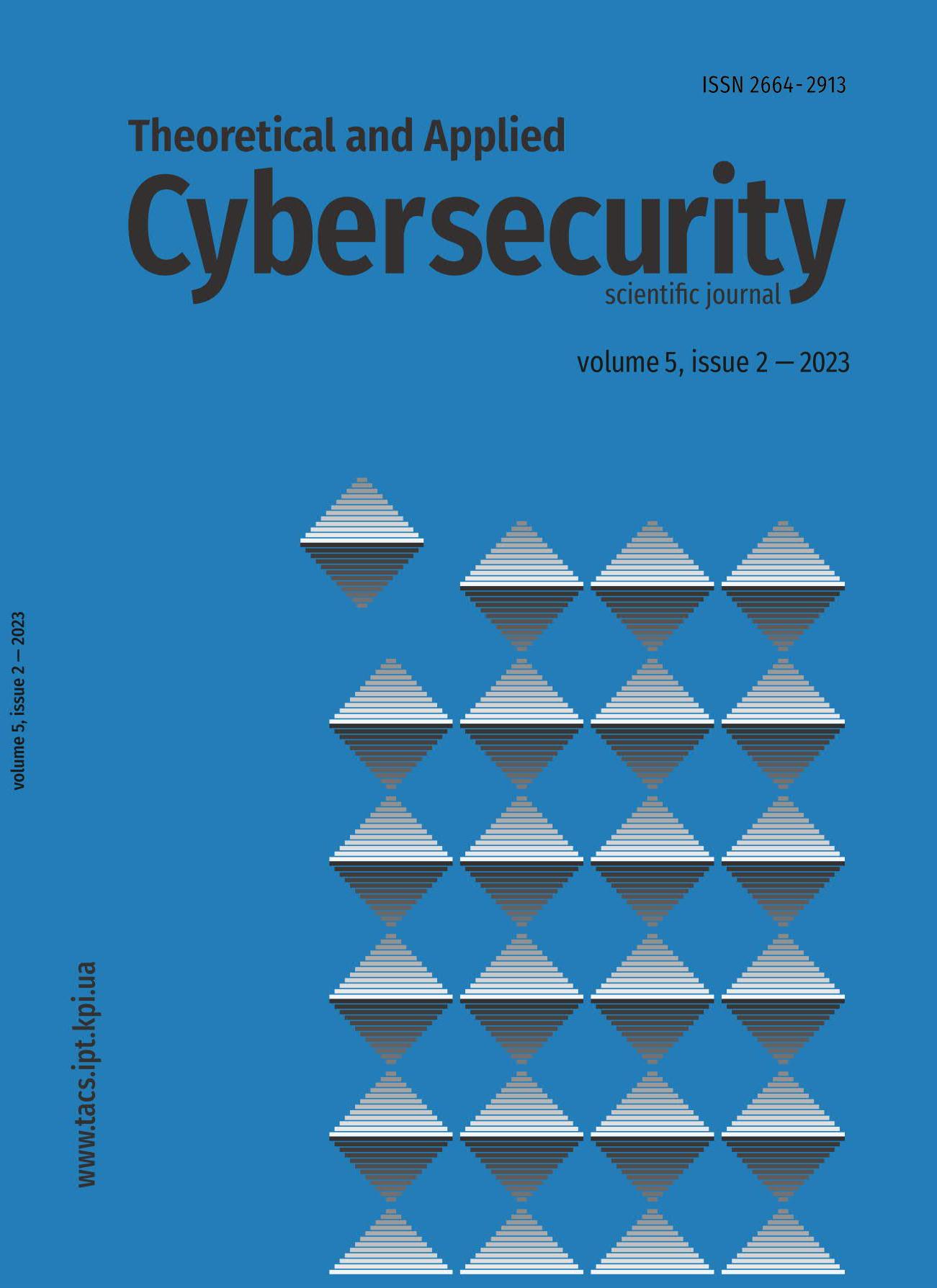Mathematical Model of the Process of Raising Integers to an Arbitrary Power of a Natural Number in the System of Residual Classes
DOI:
https://doi.org/10.20535/tacs.2664-29132023.2.278891Abstract
It is known that the use of a non-positional number system in residual classes (SRC) in computer systems (CS) can significantly increase the speed of the implementation of integer arithmetic operations. The use of such properties of a non-positional number system in the SRC as independence, equality and low-bitness (low-digit capacity) of the residues that define the non-positional code data structure of the SRC provides high user performance for the implementation in the CS of computational algorithms consisting of a set of arithmetic (modular) operations. The greatest efficiency from the use of the SRC is achieved when the implemented algorithms consist of a set of arithmetic operations such as addition, multiplication and subtraction.
There is a large class of algorithms and tasks (tasks of implementing cryptoalgorithms, optimization tasks, computational tasks of large dimension, etc.), where, in addition to performing integer arithmetic operations of addition, subtraction, multiplication, raising integers modulo and others in a positive numerical range, there is a need to implement the listed above arithmetic and other operations, in the negative numerical range. The need to perform these operations in a negative numerical range significantly reduces the overall efficiency of using the SRC as a number system of the CS. In this aspect, the lack of a mathematical model for the process of raising integers in the SRC in the negative numerical region makes it difficult to develop methods and procedures for raising integers to an arbitrary power of a natural number in the SRC, both in positive and negative numerical ranges.
The purpose of the article is the synthesis of a mathematical model of the process of raising integers to an arbitrary power of a natural number in the SRC, both in positive and negative numerical ranges.
Downloads
Published
Issue
Section
License
Authors who publish with this journal agree to the following terms:
Authors retain copyright and grant the journal right of first publication with the work simultaneously licensed under a Creative Commons Attribution License that allows others to share the work with an acknowledgement of the work's authorship and initial publication in this journal.
Authors are able to enter into separate, additional contractual arrangements for the non-exclusive distribution of the journal's published version of the work (e.g., post it to an institutional repository or publish it in a book), with an acknowledgement of its initial publication in this journal.
- Authors are permitted and encouraged to post their work online (e.g., in institutional repositories or on their website) prior to and during the submission process, as it can lead to productive exchanges, as well as earlier and greater citation of published work (See The Effect of Open Access).

